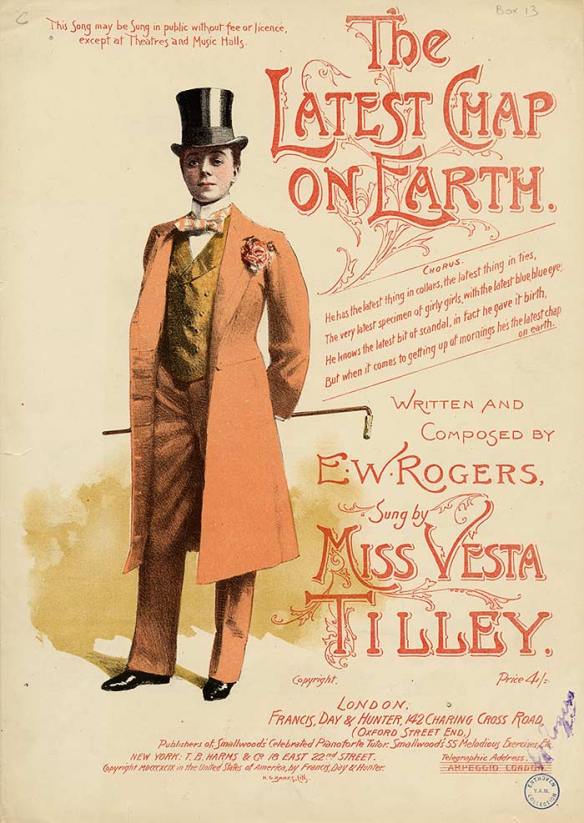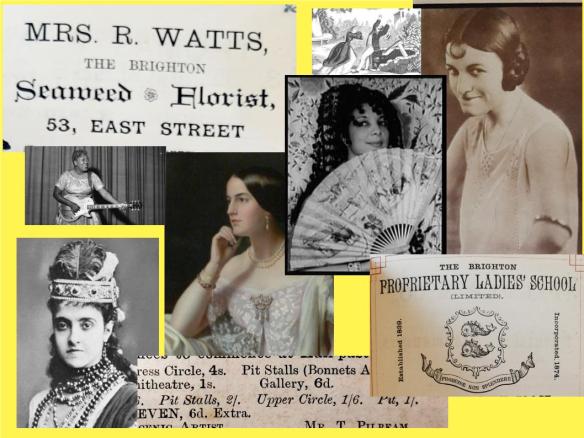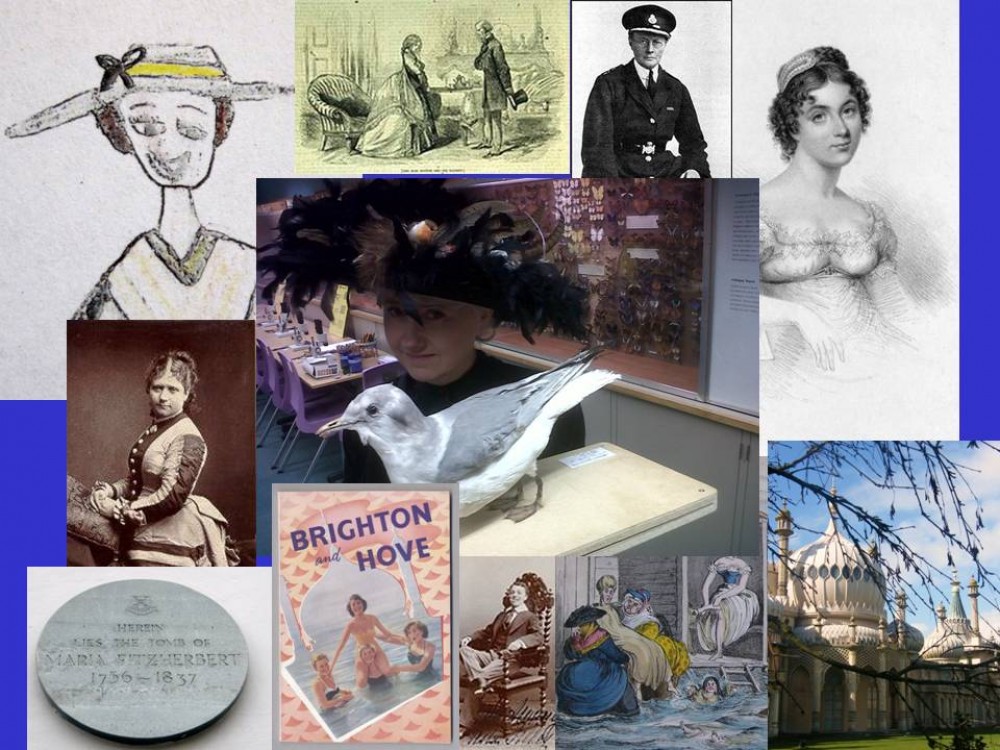
OK, so this post might be a bit late for panto season but it’s always a good time to think about the magnificent Vesta Tilley, music-hall star and one of the most successful male impersonators of the late Victorian and Edwardian Music Hall, later resident of Hove. Below is the only slightly changed article I wrote for the Brighton and Hove Independent newspaper, published in early January 2016.
Christmas means it’s almost panto time again. As a host of pantomime dames and girl-boy heroes prepare to tread the boards, it’s a great time to remember one of the most famous cross-dressing performer who delighted Victorian and Edwardian music-halls, such as Brighton’s Hippodrome, before retiring to Hove. Vesta Tilley- real name Mathilda Powles – was born in Worcester in 1864. With her father a comedy actor and music-hall chairman, she appeared on stage dressed as a boy from the age of three and was so successful she was the family breadwinner by the age of eleven. By the time she was an adult Vesta was drawing crowds with her drag act, performing songs and sketches dressed as one of many – usually poorly behaved or morally dubious – male characters. During the rowdy golden years of music-hall an act would be sharing the bill with anything from acrobat-trampolinists to escapalogists to comedy pianists to illusionists. Performers who hoped to have staying power were the ones who had nerves of steel and could stand out from the crowd. The sight of Vesta, who never tried to hide her womanly singing voice, a woman swaggering confidently on stage in trousers was notorious enough to send a frisson through the audience without straying too far from the boundaries of the double-entendre ridden, saucy music-hall world. One of Vesta’s most popular characters was ‘Burlington Bertie’, a well-dressed yet idle toff about London who lays in bed until late in the morning and spends his inheritance ‘Along with the Brandy and Soda Brigade’. As ‘The Seaside Sultan’ Vesta poked fun at the pretensions of male office clerks on seaside holidays, ‘a flannelled fool from an office stool’. Audiences lapped it up and, all through her career, adoring fanmail arrived from both men and women. For men, Vesta was a fashion icon and many men would take her picture to their tailors demanding a suit ‘cut like Vesta’s.’ Unisex fashions were a long way in the future and I wonder how many women sitting in the audience in their long frocks, unending layers of petticoats, corset and padding underneath, envied the freedom of Vesta’s masculine clothes. Vesta wasn’t to everyone’s taste, though. Apparently, during the 1914 Royal Command performance, Queen Mary and the women in her entourage preferred to look away rather than watch the shocking sight of a woman in trousers. They were in the minority, however. By then Vesta was the highest paid female performer on the British stage, regularly making £50 per week. During the early days of the First World War Vesta, dressed as a soldier, put her act to the service of army recruiting. Singing songs such as ‘We Don’t Want To Lose You But We Think You Ought To Go’, sometimes urging men to come onto the stage and join up there and then, she became known as ‘Britain’s Best Recruitment Sergeant’.
In 1919 Vesta decided to hang up her trousers for good. The proceeds from her farewell tour, which lasted almost a year, were given to different children’s charities. She made her final performance at the London Coliseum at the age of 56. Her husband, Walter De Frece, ex music-hall entrepreneur and one time co-owner of Brighton’s Hippodrome in Middle Street, had been knighted for his efforts for the war effort. He was soon to become Conservative MP for Blackpool. As the very feminine Lady De Frece, Vesta spent the rest of her life until her death in 1952 between Monte Carlo and her flat in St Aubyn’s Mansions on the Hove sea-front. Vesta wasn’t the only cross-dressing female music-hall star. Bessie Bellwood, the American Ella Shields, Hetty King and Millie Hylton also enjoyed success.

Vesta’s – or should that be ‘Lady de Frece’s’ – former residence, St Aubyn’s Mansions on Hove sea front, has been commemorated with a blue plaque.







